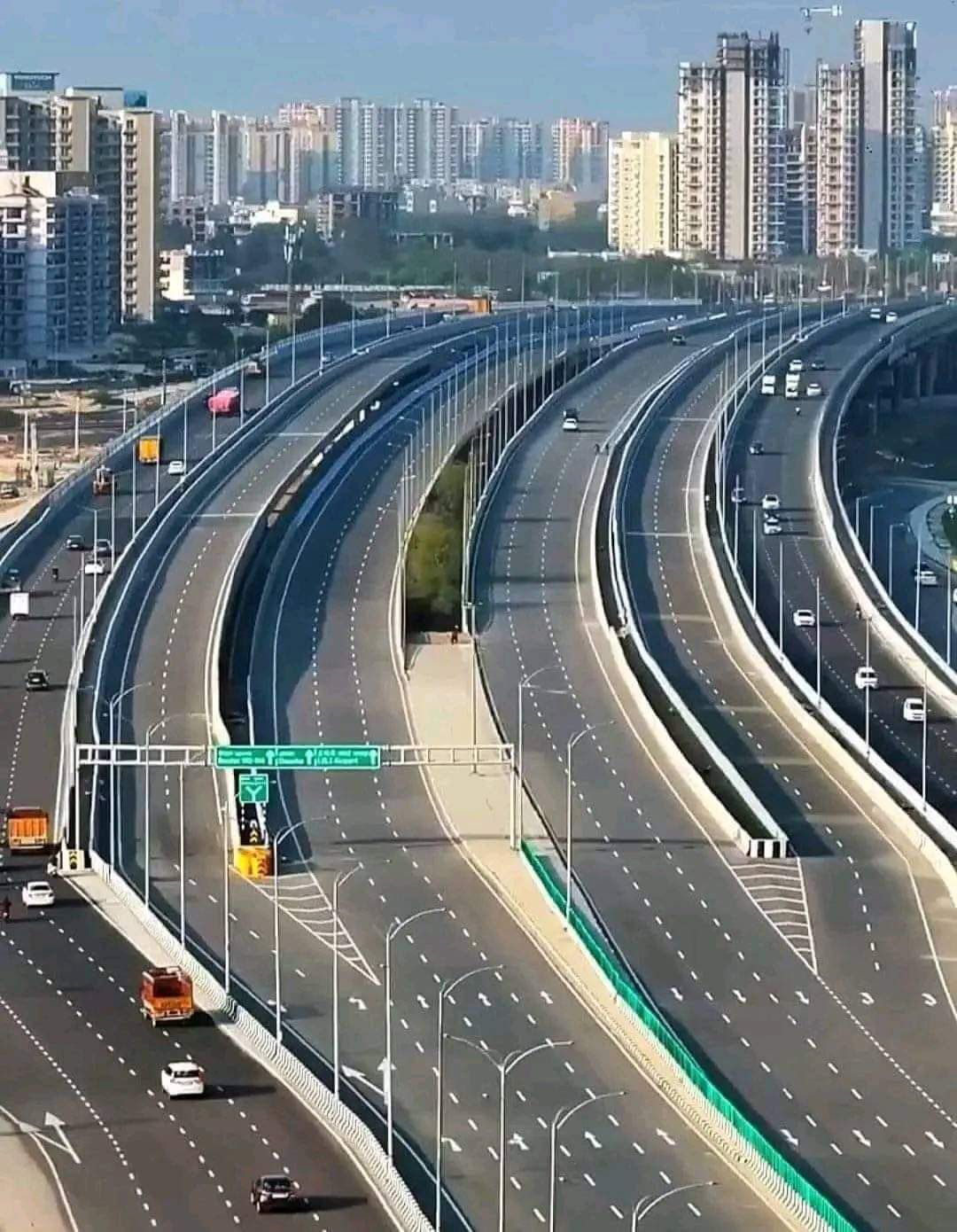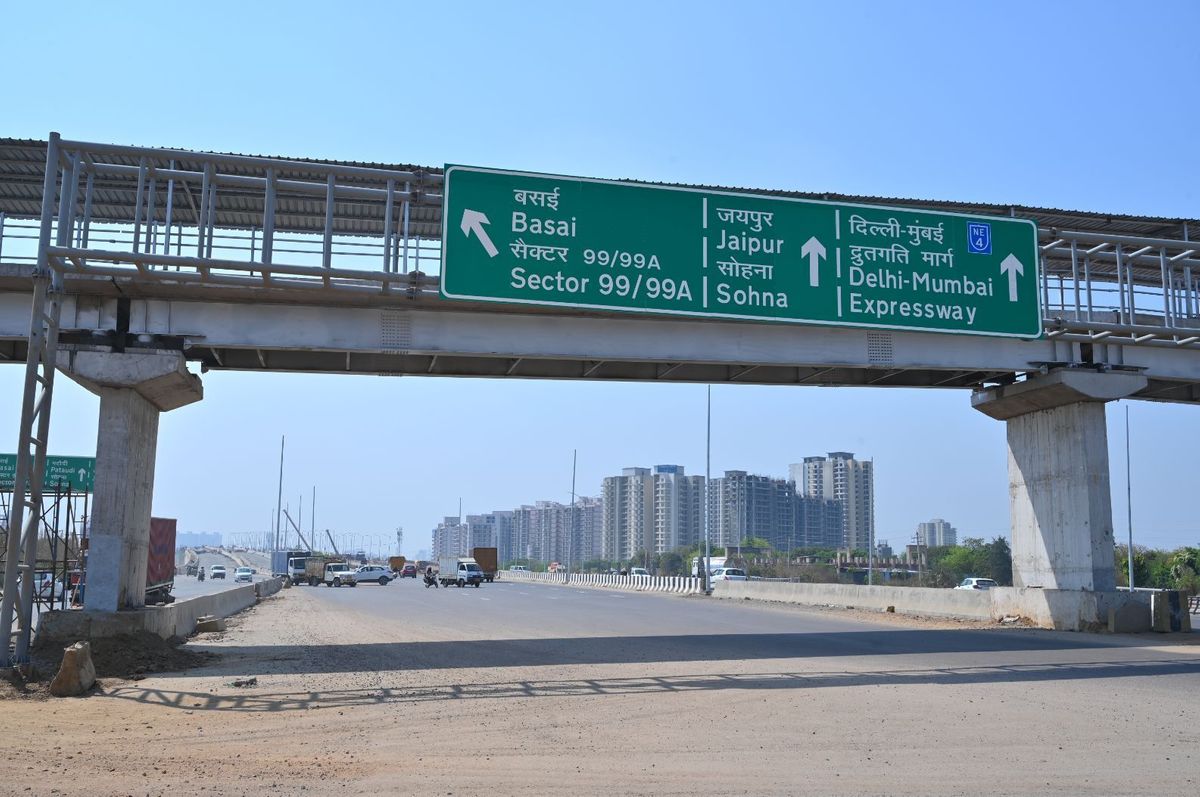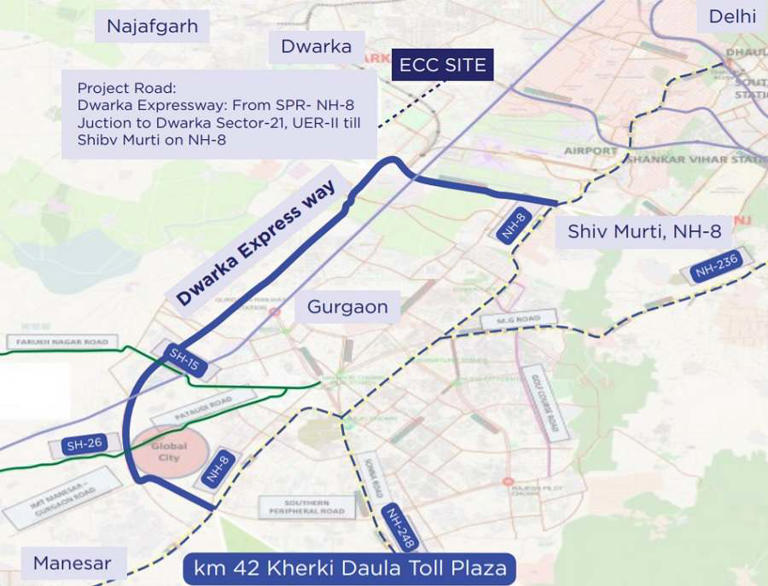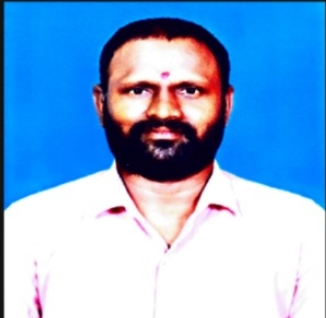Dwarka Expressway: India’s First Elevated Urban Expressway
On March 11, 2024, PM Modi marked a historic moment by inaugurating the Dwarka Expressway, located in Sector-25, Dwarka.
This landmark infrastructure project stands as India’s inaugural elevated urban expressway, symbolizing a significant leap in the nation’s transportation landscape.

Spanning an impressive 16 lanes, the expressway spans 27 kilometers and serves as a crucial link between Delhi and Gurugram, aiming to alleviate traffic congestion in the region.
With an estimated cost of approximately Rs. 7,500 crores, the construction of the Dwarka Expressway underscores a monumental investment in modernizing India’s transportation infrastructure.
This mammoth project is poised to redefine travel between two bustling metropolitan centers, promising enhanced connectivity and smoother commuting experiences for residents and commuters alike.

Minister of Road Transport & Highways, Government of India, Nitin Gadkari recently took to Linkedin to laud the completion and inauguration of the Dwarka Expressway.
- Gadkari highlighted the significance of the project in enhancing connectivity and easing traffic congestion between Delhi and Gurugram.
- He commended the efforts of all stakeholders involved in the successful execution of the project, underscoring the government’s commitment to modernizing India’s transportation infrastructure.
As the nation embraces this innovative expressway, it heralds a new era of efficient transportation, promising boundless opportunities for economic growth and societal advancement.
Dwarka Expressway: Route Map
- Stretching across 27 kilometers, the ambitious Dwarka Motorway project (NH 248-BB) is poised to forge a vital link between Mahipalpur (Shiv Murti) in Delhi and Kherki Dhaula, traversing through the vibrant expanse of New Gurgaon (Gurugram) in Haryana.
- Originating as the Northern Peripheral Road (NPR) back in 2006, this transformative endeavor was entrusted to the National Highways Authority of India (NHAI) in 2016, signifying a pivotal shift towards nationwide connectivity and infrastructural enhancement.
ALSO, READ / L&T Bags Bullet Train Electrification System Project…
The monumental task of bringing this vision to fruition is being undertaken by esteemed construction partners, J Kumar and Larsen & Toubro, epitomizing a collaborative effort towards realizing this monumental infrastructure project.
Set to redefine commuting experiences, the motorway will boast an array of structural marvels, including over 20 flyovers and bridges, 2 rail overbridges/underpasses, 11 vehicle underpasses, and 20 subterranean pedestrian crossings.
Moreover, in a nod towards sustainable urban development, the motorway will feature a dedicated 2.5-meter wide cycle/bike path, encapsulating a holistic approach towards fostering eco-friendly modes of transportation and promoting healthier lifestyles within the community.
As the Dwarka Motorway project surges ahead, it stands as a beacon of progress, poised to unlock newfound avenues of connectivity, economic vitality, and social cohesion across the bustling corridors of Delhi and Gurugram.
Here is the Dwaraka Expressway route map:

© Provided by Jagran Josh
Dwarka Expressway: Project Cost
- Stretching over 27 kilometers, the expressway has been meticulously constructed at an estimated cost of Rs. 7,500 crore.
- Envisioned in 2006, this monumental project reached its fruition in 2024, culminating in the grand inauguration ceremony officiated by Prime Minister Modi at Sector-25 in Dwarka.
Dwarka Expressway: Toll Rates
While the exact toll rates for the Dwarka Expressway are yet to be officially announced, media reports have provided insights into the anticipated toll charges for single journeys:
- Car/Van/Jeep: Rs. 80
- Light Commercial Vehicle (LCV): Rs. 115
- 3 Axle Vehicle: Rs. 235Bus/ Truck: Rs. 235
Dwarka Expressway: Imp Details
- The Dwarka Expressway is India’s pioneering elevated urban expressway, aimed at easing traffic congestion and enhancing connectivity between Delhi and Gurugram.
- the Haryana section, consists of two segments: one from the Delhi-Haryana border to Basai ROB (10.2 km) and another from Basai ROB to Kherki Daula (Cloverleaf Interchange) (8.7 km).
- It features eight lanes and a single-pillar flyover, along with a combination of multi-level interchanges, tunnels, underpasses, at-grade road sections, and elevated flyovers.
- The expressway boasts India’s longest (3.6 kilometers) and widest (total sixteen lanes) urban road tunnel.
- It connects Dwarka Sectors – 88, 83, 84, 99, and 113 with Sector-21 and the proposed Global City in Gurugram.
- Equipped with an advanced safety mechanism, including a fully automated toll system, ensuring the safety and convenience of commuters.
- The project consumes an estimated 2 lakh MT of steel and 20 lakh cubic meters of concrete, signifying a significant commitment to robust infrastructure development and sustainable construction practices.
Source: The Metrorailguy








